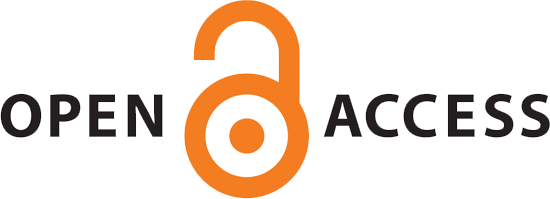Machine Learning Revolution in Predicting Difficult Intubation: A Systematic Review
Abstract
Background: The presence of a difficult airway (DA) remains a major concern in anesthesia, contributing significantly to patient complications and adverse outcomes. Traditional clinical assessments often fall short in accurately predicting difficult intubation. With the advancement of artificial intelligence, machine learning (ML) has emerged as a promising approach for enhancing airway risk prediction. This systematic review aimed to evaluate current studies that utilize machine learning models for predicting difficult laryngoscopy and intubation and to assess the features, algorithms, and predictive performance of these models.
Methods: Following PRISMA guidelines, a comprehensive search was conducted in seven databases (PubMed, Scopus, Web of Science, Science Direct, Wiley, SID, and Google Scholar) to identify relevant original articles published between 2000 and July 2025. Studies using ML models to predict difficult intubation based on clinical, morphological, or acoustic features were included. A total of nine eligible studies were reviewed.
Results: Various ML algorithms, including KNN, SVM, Random Forest, XGBoost, and decision trees (J48), were applied across studies. Feature inputs ranged from traditional clinical parameters (e.g., Mallampati score, neck circumference) to advanced modalities such as voice analysis and facial image processing. Reported model performance (AUC) ranged from 0.71 to 0.924, indicating generally high predictive accuracy. Models incorporating non-traditional data (e.g., acoustic or imaging features) tended to perform better.
Conclusion: ML-based models show strong potential in improving the prediction of difficult airways and can serve as supportive tools in preoperative assessment. However, standardization of input features, external validation, and enhanced model interpretability are essential for successful clinical implementation.
[2] Crawley S, Dalton A. Predicting the difficult airway. BJA Educ. 2015;15(5):253-7.
[3] Peterson GN, Domino KB, Caplan RA, Posner KL, Lee LA, Cheney FW. Management of the difficult airway: a closed claims analysis. Anesthesiology. 2005;103(1):33-9.
[4] Heidegger T. Management of the difficult airway. N Engl J Med. 2021;384(19):1836-47.
[5] Wang B, Yao W, Wang M, Xu J, Huang D, Lu X, et al. Development of A Machine Learning Model for Predicting Unanticipated Difficult Tracheal Intubation. J Anesth Transl Med. 2022;1(1):26-31.
[6] Sezari P, Kohzadi Z, Dabbagh A, Jafari A, Khoshtinatan S, Mottaghi K, et al. Unravelling intubation challenges: a machine learning approach incorporating multiple predictive parameters. BMC Anesthesiol. 2024;24(1):453.
[7] Sreekantha D, Glen RRC, Prajna M, editors. Prediction of Difficulties in Airway Management using Machine Learning Algorithms. 2018 IEEE International Conference on Computational Intelligence and Computing Research (ICCIC); 2018: IEEE.
[8] Moustafa MA, El-Metainy S, Mahar K, Mahmoud Abdel-magied E. Defining difficult laryngoscopy findings by using multiple parameters: A machine learning approach. Egypt J Anaesth. 2017;33(2):153-8.
[9] Rodiera C, Fortuny H, Valls A, Borras R, Ramírez C, Ros B, et al. Voice Analysis as a Method for Preoperatively Predicting a Difficult Airway Based on Machine Learning Algorithms: Original Research Report. Health Sci Rep. 2024;7(12):e70246.
[10] García-García F, Lee D-J, Mendoza-Garcés FJ, García-Gutiérrez S. Reliable prediction of difficult airway for tracheal intubation from patient preoperative photographs by machine learning methods. Comput Methods Programs Biomed. 2024;248:108118.
[11] Kim JH, Choi JW, Kwon YS, Kang SS. Predictive model for difficult laryngoscopy using machine learning: retrospective cohort study. Braz J Anesthesiol. 2022;72(5):622-8.
[12] Yan S, Guo M, Gao Z, Wu H, Liu X, Yin G, et al. A prediction model for difficult intubation using skeletal features in patients affected by apnea-hypopnea syndrome. Minerva Anestesiol. 2022.
[13] Kim JH, Kim H, Jang JS, Hwang SM, Lim SY, Lee JJ, et al. Development and validation of a difficult laryngoscopy prediction model using machine learning of neck circumference and thyromental height. BMC Anesthesiol. 2021;21:1-7.
[14] Yan Q, Yan H, Han F, Wei X, Zhu T. SVM-based decision support system for clinic aided tracheal intubation predication with multiple features. Expert Syst Appl. 2009;36(3):6588-92.
| Files | ||
| Issue | Article in Press |
|
| Section | Review Article(s) | |
| Keywords | ||
| Difficult airway Machine learning Intubation prediction Laryngoscopy Artificial intelligence | ||
| Rights and permissions | |

|
This work is licensed under a Creative Commons Attribution-NonCommercial 4.0 International License. |




